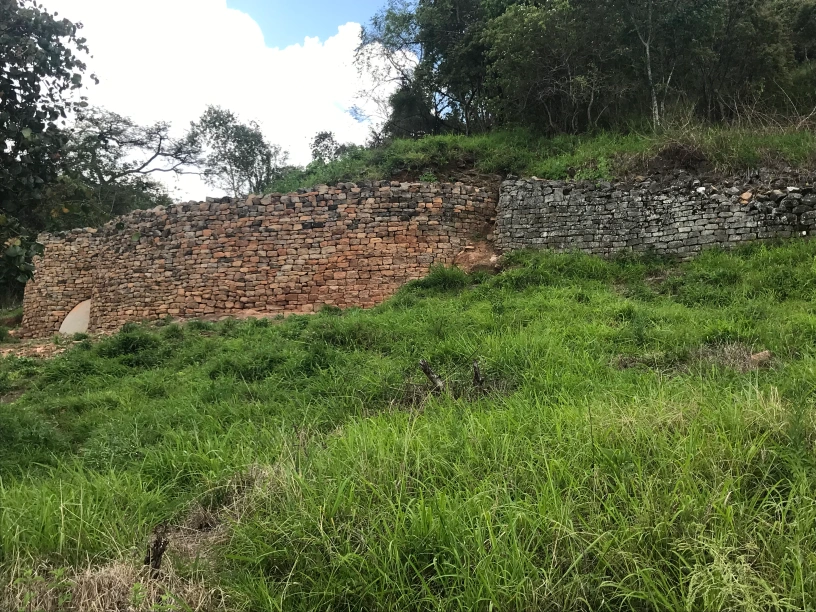By Tatenda Chitagu
ZIMBABWE-Every school holidays, Peter Nyama, from Zimbabwe’s Midlands province, would not miss a chance to visit the Great Zimbabwe Monuments-a world heritage site located 30 kilometers east of the country’s southern city of Masvingo.
The Great Zimbabwe Monuments were declared a UNESCO World Heritage Site in 1986. They are the largest dry-stone structure in sub-Saharan Africa.
Growing up, Nyama would marvel at the dry stone walls and spectacular architectural and cultural landscapes in Africa, from which the country draws its name-which was built without mortar and comprising of organic architecture.
But as the years passed by, the World Heritage Site, sitting on 720 hectares, started losing its lustre-and domestic tourists like him, and other international tourists arrivals started to decline, according to the National Museums and Monuments of Zimbabwe (NMMZ), a government body which is charged with preserving ancient, historical and natural monuments, relics and other objects of historical or scientific value or interest.
“The world heritage site has a potential to reach 100 000 visitors per year, but visitorship started declining drastically. The lantana camara specie had virtually colonised the monuments and the immediate environs too,” said Lovemore Mandima, NMMZ Southern region director.
Nyama agrees the invasive specie was a major put-off.
“The Great Zimbabwe Monuments, had degenerated into ruins. The lantana camara plant had obscured parts of it into a bush. This plant is thorny and its dense growth made the site a home for snakes and other harmful creatures,” Nyama, now a university graduate, told HuMFOZ.
Lantana camara is a shrub that is listed among the world’s 100 worst invasive species. And this notorious weed has a complex root system while its prickly nature makes it a nightmare to eradicate.
At the Great Zimbabwe, sprouts of the alien plant were now a menace as they emerged between the walls, pushing the stones apart and distorting the monuments’ original architectural setup, crafted in ancient times.
“We had been using the manual method to uproot the lantana camara but it would sprout out time and again,” Mandima said.
And the Great Zimbabwe is not the only place being overwhelmed by invasive species. A recent study assessed the problem with invasive species in Zimbabwe and found that the problem is increasing. Over 2000 such species have now been collected in Zimbabwe according to the study.
“The structure and integrity of various ecosystems in Zimbabwe is rapidly deteriorating, in part, due to invasive alien plants…There is need to strengthen infrastructural and human capacity in order to effectively deal with challenges associated with invasive alien plant species,” says Dr. Chikowore the lead researcher in the study.
However, his new study also points towards a solution. The so-called classical weed biological control is using nature’s own enemies to help fight the invasive plants. So rather than using chemicals, Dr. Chikowore’s research shows that insects, nematodes and plant diseases (pathogens) can be used to fight the invasive species.
“The technique is highly effective, environmentally friendly and sustainable with very low to no recurrent costs,” Chikowore told this publication in e-mailed responses to questions sent to him concerning the study.
“Through this technique several invasive alien weeds particularly those affecting water bodies have been successfully brought under control. However, implementation of biological control in Zimbabwe seems to have slowed down over the last two decades despite an increase in the number of invasive alien plants as well as an expansion in the coverage of already known invasive alien plants,” he said.
However, for the Great Zimbabwe monuments, biological, cultural (modification of a weed’s habitat) and mechanical (physical removal) control proved not to be the best as it would tamper with the dry stone structure while the invasive specie kept on re-emerging.
According to another study by the university of Florida, mechanical, chemical, cultural and biological control practices can be used alone or in combination to control or mitigate the effects of invasive plants but the success of each of these methods depends on the characteristics of the invaded area and the target plant. The study argues that while each control method has its pros and cons, chemical control is among the most effective and resource-efficient method to treat invasive species, especially considering the level and size of the infestation and landscape, like the one at the Great Zimbabwe monuments.
Another study by the University of New Hampshire concurs that control or management of invasive plants should include consideration and integration of techniques that are based on the characteristics of the target invasive plants and size of the infestation.
“It is important to understand the specific characteristics of target plant(s) to determine the appropriate management strategy,” reads the study. It adds; “In specific species, the ratio of native to invasive plants, size of the plants, density of stems (a few plants vs. a whole property invaded), size/extent of infestation, location within the landscape and the availability of financial and time resources will influence whether mechanical, cultural, biological or chemical control – or a combination – will be most effective.”
Dr Chikowore agrees that implementing biological control against invasive alien weeds is not a one-size-fits-all approach.

Some of the walls cleared of the lantana camara
Nyama is not the only one frowning at the run-down caused by the invasive plant.
“Despite the significant cultural heritage and the pride that the Great Zimbabwe Monuments bring to Zimbabweans, there have been continuous challenges in terms of resources to maintain or upgrade this site,” said the United Nations Office for Project Services (UNOPS), which is coordinating a three-year project to restore the monuments, dubbed the Great Zimbabwe Development Project (GZDP).
The three year project, started in 2022, is being implemented by UNESCO, who are the custodians of World Heritage Sites, and the NMMZ. Other national partners include the Ministry of Environment, Tourism and Hospitality Industry (MOETHI), the Zimbabwe Tourism Authority (ZTA), the Great Zimbabwe Board, the Environmental Management Authority (EMA), Masvingo Rural District Council (RDC) and the National Parks and Wildlife Authority Management.
Before the GZDP was initiated, the United States Embassy in Zimbabwe also came to the rescue of the Great Zimbabwe Monuments by channeling US$475 000 through the World Monuments Fund, and part of this fund helped the NMMZ to chemically eradicate the lantana camara, including the shoots that had grown between the walls, without tempering with any of the dry stone walls. The money, released under the Great Zimbabwe Preservation project, also helped to install modern monitoring equipment to check wall movements, among other threats.
The invasive plant was sprayed with kaput and impala herbicides, chemicals that proved highly effective in disabling the troublesome root system. In no time, the lantana camara started wilting following the chemical application.
As a result of the US Embassy’s intervention, lantana camara has been cleared on more than five hectares and visitors are now using the path they had dreaded to see the terrace walls.
“I can now enjoy the Great Zimbabwe Monuments of yesteryear, something that was impossible two years ago. Incidences of snakes and other harmful creatures have now been reduced,” Nyama said.
*Banner Image: The great enclosure at the Great Zimbabwe Monuments (picture sourced online)

